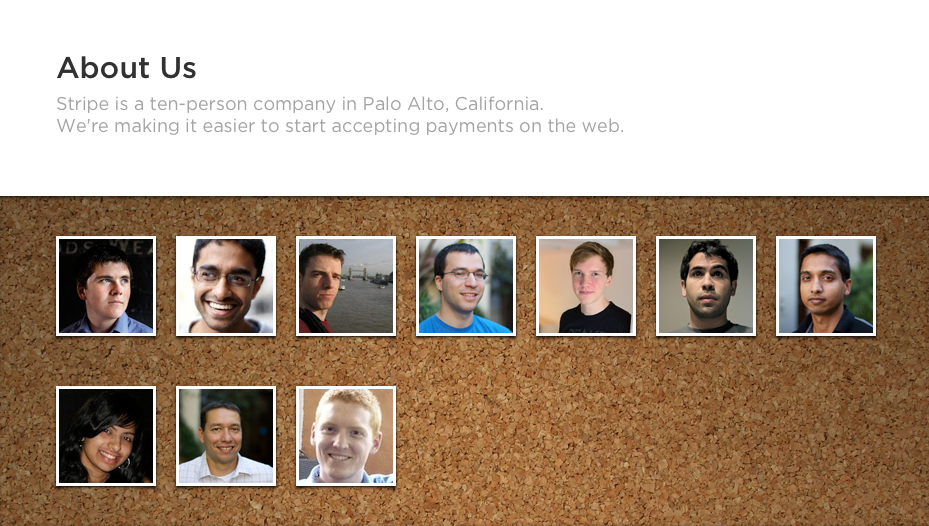- Published on
Investigating why Stripe succeeded in its early days
- Authors

- Name
- Nathan Lu
In my attempt to start my own business, I have been doing this thing where I study the history of successful and unsuccessful businesses, trying to pinpoint important details that lead to success. Stripe was one of the first companies I decided to look at. Them being one of my favourite APIs, with well written documentation and user-friendly design.
Originally, I embarked on the journey expecting them to follow a standard start-up journey: being the first to market, growing fast early, and immediately turning into what they are today. I was wrong as fuck.
Stripe began its journey in August 2010, spending the next fourteen months building the infrastructure necessary for its vision. After extensive development, the company launched publicly on September 30, 2011, with only seven team members. Despite acquiring only 50 users initially (ith 20 of them from Y Combinator), Stripe's public launch did not generate significant growth. Most of their early users were from the Ruby community. Stripe initially seemed to target solo small developers.
I also used the internet archive to inspect their website in 2011. Luckily, I was able to find detailed information on their original 10 members. I spent time researching the role and date each team member joined -- this information, unfortunately was scarce. But from listening to their podcasts and piecing together the research, one specific member played an integral part to Stripe's explosive growth in 2012: Billy Alvadro. From a podcast with Patrick Collison (I forgot which one) he mentioned Paul Graham had convinced Patrick to hire this sales person when Stripe was full of engineers. I recall Patrick said he was hesitant, until Paul Graham offered to pay Billy's salary if the relationship didn't work out. It was mentioned Billy helped secure a lot of the deals with the banks in the early days.

I believe it was also Billy Alvadro who might have played a significant role in landing large clients such as Lyft, and all the other growing startups when Stripe launched connect on October 10, 2012. Stripe Connect, a product that supervises marketplace transactions, marked a turning point for Stripe. Within a month, they showcased hocky-stick growth and notable users such as Shopify, Ballpark, Wufoo, Sumail, and ShopLocket.
Although I believe Billy was a leading force in landing those deals, I need to also give immense credit to Stripe's culture. I think their obsession over custom experience and making the product and documentation incredibly easy to navigate led them to seek periheral problems to solve (we still see this today -- with Stripe Radar & Atlas).
A surprising fact I discovered too was Stripe also wasn't the first to market. Before connect and Stripe's tooling for solo-developers, Braintree was already an established payment processor that started in 2008. When Stripe launched connect, they followed with their own marketplace solution. They launched their solution in August 14. By then, Stripe had acquired renowned clients like Lyft, Exec, Sidecar, Postmates, and Homejoy, processing up to $500,000 per day in transactions.
Here is an image from Web Submit 2012 - daily transaction volume processed 2.5 years overview (image is blurry because it is a screenshot of the projector).

Despite Stripe not being the first solo-developer payment processor, I believe them being first into the payment marketplace industry played a vital role in their victory. My main takeaway from this piece of Stripe's history is:
- have a culture of discovery - obsess over customer problems and solve peripheral troubles.
- being first in the right market (one where there is immense capital). This might reveal itself later.